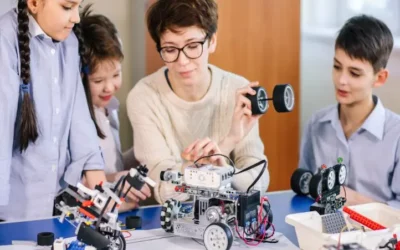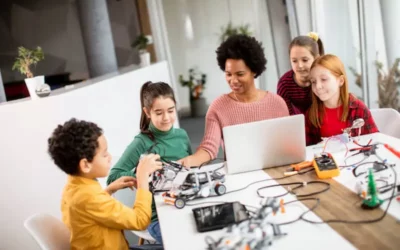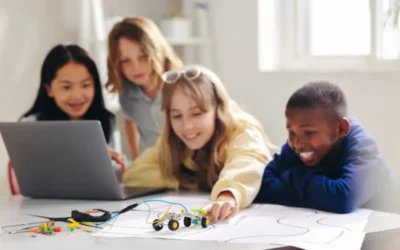Introducing coding and robotics to kids is a vital educational initiative that fosters critical skills for the digital age. It cultivates problem-solving abilities, logical thinking, and creativity from an early age, preparing children for a technology-driven future. By engaging in coding and robotics, kids not only acquire technical proficiency but also develop resilience, adaptability, and teamwork, essential attributes for success in various fields. This early exposure lays the foundation for a lifelong passion for STEM disciplines, nurturing a generation of innovative thinkers and problem solvers.
In this blog, we delve into the transformative impact of introducing coding and robotics to kids. Discover how these educational pursuits not only cultivate technical proficiency but also instil problem-solving skills and ignite a passion for innovation from an early age. This blog is your one-stop source for some top Coding and Robotics Activities for Kids.
Table of contents
The Basics of Coding
A. What is Coding?
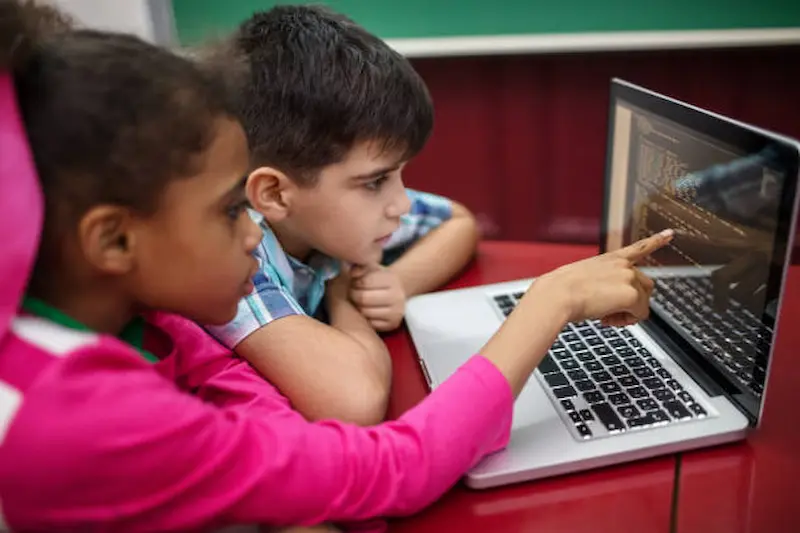
Coding, or programming, involves creating sets of instructions that a computer can follow to perform specific tasks. In today’s digital age, it has become a fundamental skill that empowers individuals to solve problems, automate processes, and drive innovation. Enrolling in coding classes for kids introduces young learners to this essential skill, helping them develop creativity, logical thinking, and a passion for technology from an early age.
B. Coding Languages for Kids
- Scratch: A visual programming language that simplifies coding concepts with drag-and-drop blocks, making it accessible for beginners.
- Python for Kids: An introductory language teaching real-world coding skills through clear syntax and versatility.
- Blockly: A visual programming language that uses interlocking blocks, fostering a seamless transition to text-based coding.
The Exciting World of Robotics
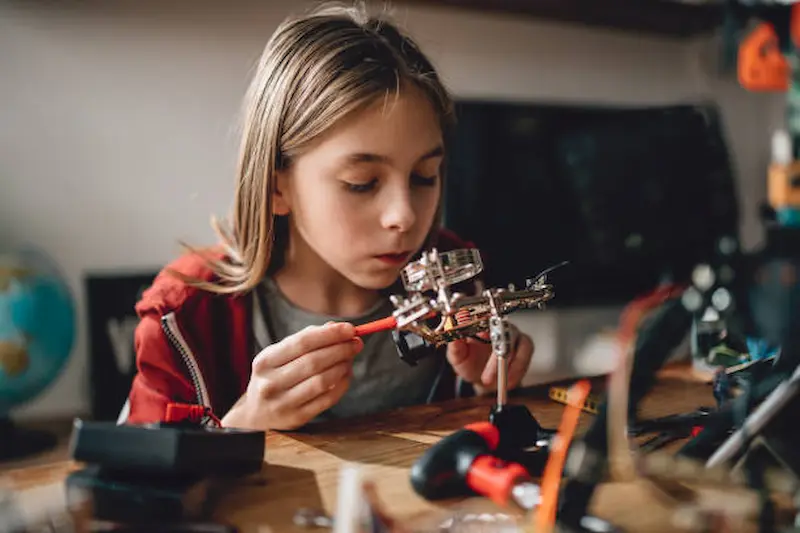
A. Understanding Robotics
Robotics involves designing, building, and programming machines capable of autonomous or controlled tasks. This interdisciplinary field combines mechanical, electrical, and computer engineering, offering a captivating exploration of technology’s possibilities. From manufacturing to healthcare, robotics plays a pivotal role in diverse industries, making it an exciting and dynamic field of study. In the context of education, robotics for kids introduces young learners to these concepts in a hands-on and engaging manner, sparking their curiosity and setting the stage for a future where they can contribute to and innovate within the ever-evolving field of robotics.
B. Types of Kid-Friendly Robotics Kits
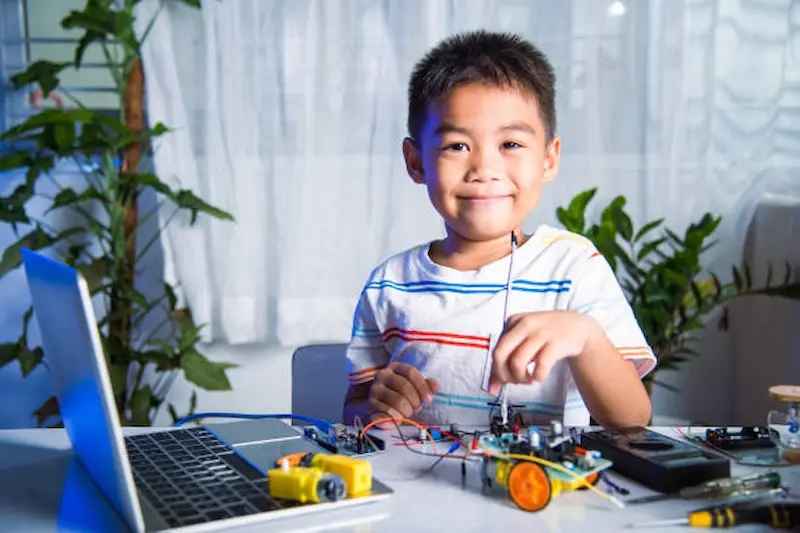
- LEGO Mindstorms:
Empowering children with hands-on building and coding experiences, LEGO Mindstorms, particularly designed as LEGO robotics for kids, fosters creativity through customizable robots, laying the foundation for future engineers and innovators.
- Ozobot: A tiny programmable robot introducing kids to coding through color-coded commands, merging simplicity with interactive learning. This approach makes coding accessible and engaging, encouraging young minds to explore the world of programming.
- Dash and Dot: These playful robots provide an entertaining and educational introduction to coding, enhancing problem-solving skills in a delightful, interactive environment. Through interactive games and challenges, Dash and Dot make coding both enjoyable and educational, creating a bridge between play and learning.
Creative Learning Environments
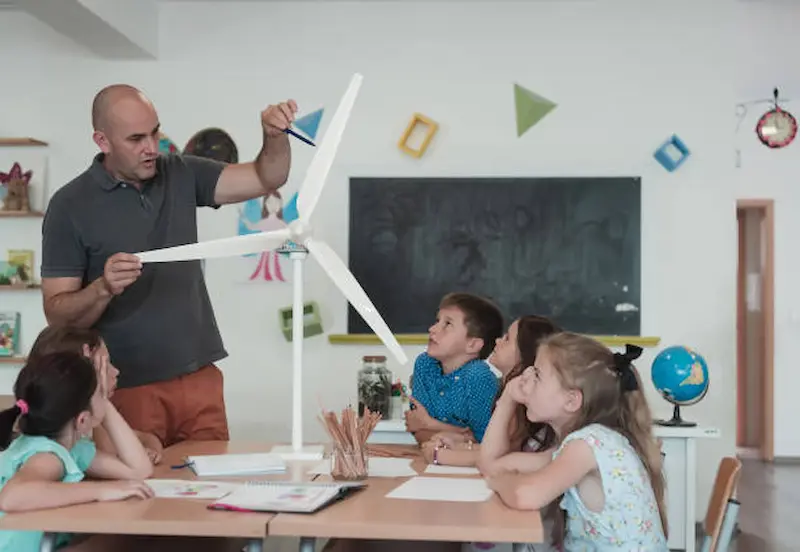
A. Setting up a Coding Corner
- Choosing the Right Tools: Select age-appropriate tools and devices equipped with educational coding software, ensuring a seamless introduction to programming concepts. From tablets to laptops, the right technology sets the stage for an interactive and enriching coding corner.
- Creating an Inspiring Workspace: Transform the coding corner into an inspiring environment with vibrant visuals, showcasing students’ robotics projects for kids, and incorporating coding-related decorations.
- This immersive space sparks curiosity and enthusiasm, fostering a positive attitude toward learning and experimentation.
B. Incorporating Robotics into the Classroom
- Educational Benefits: Integrate robotics to harness the educational benefits of hands-on learning. Robotics enhances problem-solving, critical thinking, and teamwork, providing a holistic approach to STEM education.
- Best Practices for Teachers:Facilitate effective learning in robotics classes for kids by offering structured guidance, encouraging collaborative projects, and providing diverse challenges. Teachers play a pivotal role in creating a supportive environment where students can explore, experiment, and excel in the exciting world of robotics, laying the groundwork for future innovators and problem solvers.
Fun Coding Projects for Kids
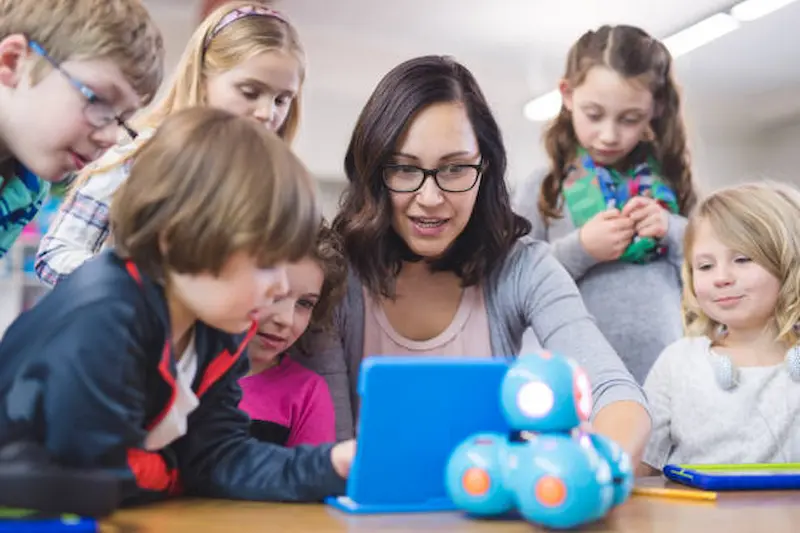
A. Interactive Storytelling with Code
- Using Scratch for Story Creation: Engage young imaginations by introducing them to Scratch, a visual programming language designed for kids. With Scratch coding for kids, they can embark on a creative journey to develop interactive stories by coding characters’ movements and dialogue. This hands-on experience not only enhances their storytelling skills but also provides a playful and accessible way to grasp fundamental coding concepts.
- Adding Animation and Sound: Elevate coding projects by incorporating animation and sound effects.
- This not only introduces kids to multimedia elements in coding but also adds a dynamic layer to their storytelling, fostering creativity and technological fluency.
B. Game Development for Kids
- Introduction to Simple Game Design: Explore the basics of game design by introducing kids to the principles of interactive gameplay. Whether through hands-on activities or online games for kids, they learn how concepts like characters, levels, and objectives serve as fundamental building blocks for their game development journey.
- Coding a Basic Game with Blockly: Take the next step in game development by coding a basic game using Blockly, a visual programming language. This hands-on experience allows kids to see their coding efforts materialize into a playable game, promoting problem-solving and logical thinking in an enjoyable and educational context.
Building Robots and Enhancing Skills
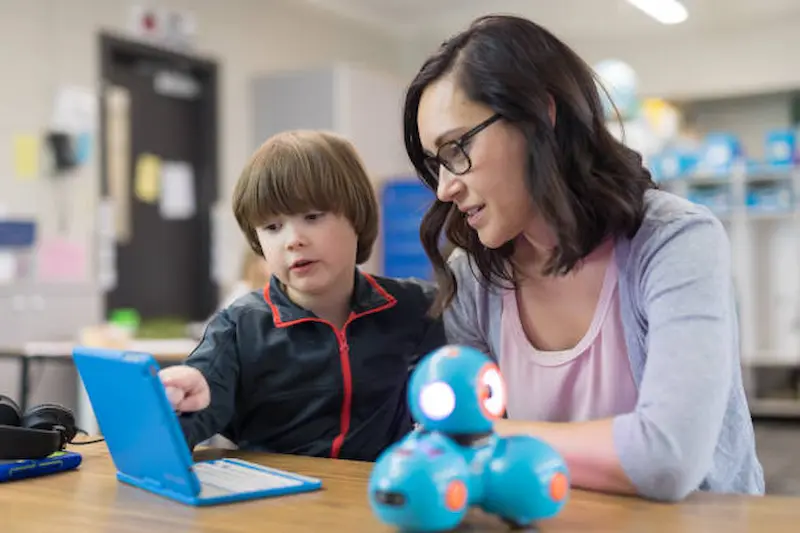
A. Hands-On Robotics Projects
- Building a LEGO Robot: Engage in practical learning by constructing a LEGO robot, promoting creativity and understanding of mechanical components.
- Programming Robot Movements: Develop coding proficiency in young learners by engaging them in the hands-on experience of programming robot movements. This immersive activity not only cultivates technical skills but also serves as a gateway to enhancing logical thinking and problem-solving abilities.
- As children navigate the intricacies of coding for robots, they are not just mastering a technical skill; they are also developing critical cognitive functions.
- This introduction to the fundamental principles of automation not only lays the groundwork for understanding technology but also sets the stage for the cultivation of leadership skills for kids.
B. Developing Problem-Solving Skills through Robotics Challenges
- Maze Navigation: Tackle problem-solving challenges by navigating robots through mazes, fostering spatial awareness and algorithmic thinking.
- Obstacle Avoidance: Enhance critical thinking skills by programming robots to navigate obstacles, instilling adaptability and strategic problem-solving in young learners.
Nurturing Creativity through Coding Challenges
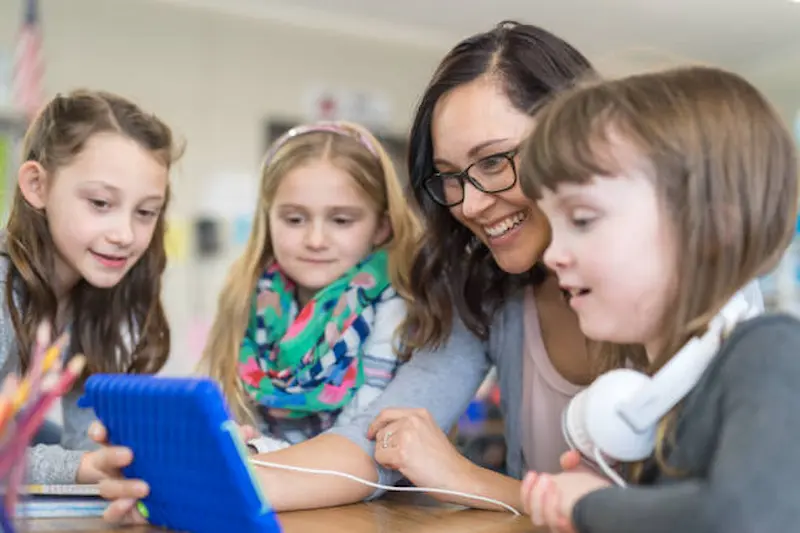
Coding challenges serve as catalysts for unleashing creativity in young minds. These activities encourage kids to think innovatively, find unique solutions, and express themselves through code. By offering a variety of challenges, the best coding classes for kids create a vibrant space where creativity flourishes. These coding challenges not only elevate coding skills but also cultivate a mindset that esteems exploration, ingenuity, and the exhilaration of conquering coding obstacles. In doing so, these classes establish the groundwork for a lifelong passion for creativity in technology.
Overcoming Challenges
Embarking on the learning journey of coding and robotics goes beyond the acquisition of technical skills; it’s a holistic development that nurtures critical thinking skills for kids. The inherent challenges in this realm serve as stepping stones for cultivating resilience, problem-solving abilities, and adaptability. Whether it’s debugging a program or troubleshooting hardware issues, each obstacle becomes a valuable opportunity for growth.
By emphasizing a positive mindset and the importance of persistence, we not only strengthen technical proficiency but also instill a mindset that equips young learners with the critical thinking skills necessary to navigate the ever-evolving landscape of technology and innovation. Coding classes for 11 year olds are particularly effective in fostering these attributes, providing age-appropriate challenges that enhance both their technical and cognitive abilities.
Conclusion
Engaging kids in coding and robotics not only equips them with practical skills but also nurtures a mindset that embraces challenges. Through hands-on experiences, children learn to break down complex problems into manageable steps, enhancing their logical reasoning abilities. The benefits extend beyond coding proficiency, fostering a holistic development that prepares children for the challenges of a technology-driven world. Through hands-on experiences, kids gain valuable insights into STEM disciplines, laying the groundwork for future innovation and success in a rapidly evolving technological landscape.
To get your hands on more such articles, educational content, and free resources on coding for kids, robotics courses, game development, etc., check out the BrightCHAMPS Blog Page now!
Frequently Asked Questions ( FAQs )
A1. Introducing coding to kids is suitable from ages 6 and above, fostering early exposure to essential computational skills.
Q2. How can parents support their child’s interest in coding?
A2. Parents can support their child’s interest in coding by providing coding games, encouraging creative projects, and exploring coding classes or clubs.
Q3. Are there any free coding resources for kids?
A3. Yes, numerous free coding resources for kids, such as Scratch, Code.org, and Khan Academy, offer interactive and accessible learning experiences.
Q4. What is the ideal duration for coding sessions for young learners?
A4. For young learners, the ideal duration for coding sessions is around 30 to 60 minutes, balancing engagement with attention span.
Q5. How can coding and robotics benefit a child’s academic performance?
A5. Coding and robotics benefit a child’s academic performance by enhancing problem-solving, critical thinking, and mathematical skills, fostering a holistic approach to learning.


 We are an army of educators and passionate learners from BrightChamps family, committed to providing free learning resources to kids, parents & students.
We are an army of educators and passionate learners from BrightChamps family, committed to providing free learning resources to kids, parents & students.








